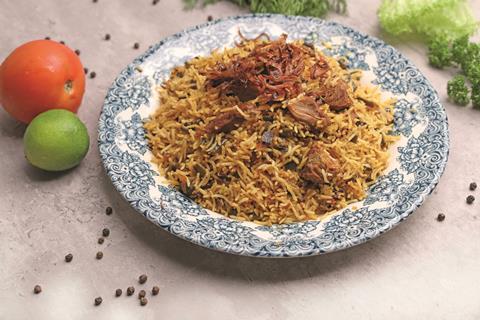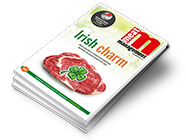Maintaining traditional eating habits helps communities stay connected to their heritage, says IMTA’s Lamyah Moochhala, which is why it is necessary to be informed by cultural diversity when considering both meat marketing tactics and the National Food Strategy.
From a lamb roast on Easter Sunday to mutton biryani on Eid al-Adha, cultural diversity is the centre of meat consumption. Meat intake habits and type of meat consumed varies by ethnicity, culture and religion – the diversity of which is only growing here in the UK.
Because eating is a social behaviour, immigrants and subsequent generations use diet as their way of maintaining a connection to the culture they no longer have easy access to. As more immigrants settle in the UK, it is important to understand these meat consumption habits, why they exist and why access to traditional foods should be maintained. Analysing the different meat consumption patterns in practice in the UK can also contribute to informed marketing tactics, making commonly consumed meats appeal to the ethnic groups that consume them most.
Across immigrant and local cultures, food holds distinct social value in terms of religion and connection to one’s community. Meat prepared and consumed as part of cultural cuisine communicates history, memory and comfort, thus creating traditional culinary practices, such as a Sunday roast or cholent on Shabbat.
Immigrants who move to the UK hold on to their traditional diets for a long time compared with the other aspects of culture that they bring with them. Researchers from University College London found that meat preferences tend to be the last form of consumption that migrants change to assimilate with their new homes, in a process called dietary acculturation. This is one of the later cultural integrations to occur, as traditional food habits can be practised in the privacy of one’s home.

Shared meals within the household tend to be multigenerational, causing one’s family to influence their meat consumption and further contributing to the social value of food. In general, ethnic minorities and recent immigrants are more likely to live in multigenerational households, with elder generations taking the responsibility to maintain traditional eating practices. In a study by Çoker and colleagues, minority groups reported a stronger perceived influence of family and friends on their meat consumption habits, further reflecting a higher proportion of communal eating traditions at shared home meals, social gatherings and cultural celebrations.
Additionally, when asked by PhD candidate Hibba Mazhary about their willingness to consume outside their common preferences, interviewees cited their families as a primary barrier to consuming meats external to their cultural cuisine. This results in an inclination for meat consumption and preferences to remain within ethnic and cultural boundaries. Some Muslim South Asians restrict their meat consumption entirely when halal options are inaccessible, even though, according to Mazhary, 71% of all sheep and 22% of all broiler chicken slaughtered in the UK is done so using halal methods*.
AHDB indicates that the demand for halal meat has been steadily increasing, so those in the meat sector should consider expanding halal meat imports to supplement local production and ensure that Muslim consumers have sufficient access to their meat preferences. The different meat consumption practices of different cultures in the UK are important to consider as the Government approaches this year’s Food Strategy.
Some minority ethnic groups in the UK have a higher likelihood for diet-related health complications such as diabetes and obesity. Public health specialists from Teesside University state that the reasons for this disparity remain under-researched. With nutrition and food security being focal points of the National Food Strategy, it is important not to overlook one of the key pillars of food security – access to culturally appropriate foods. Acknowledgement and efforts towards a strategy that accounts for ethnic and cultural diversity will minimise the barriers against healthy dietary practices among ethnic minorities.
*Figures taken from 2019 FSA survey.
2024 FSA figures show 72% for sheep and 16% for chicken.

















